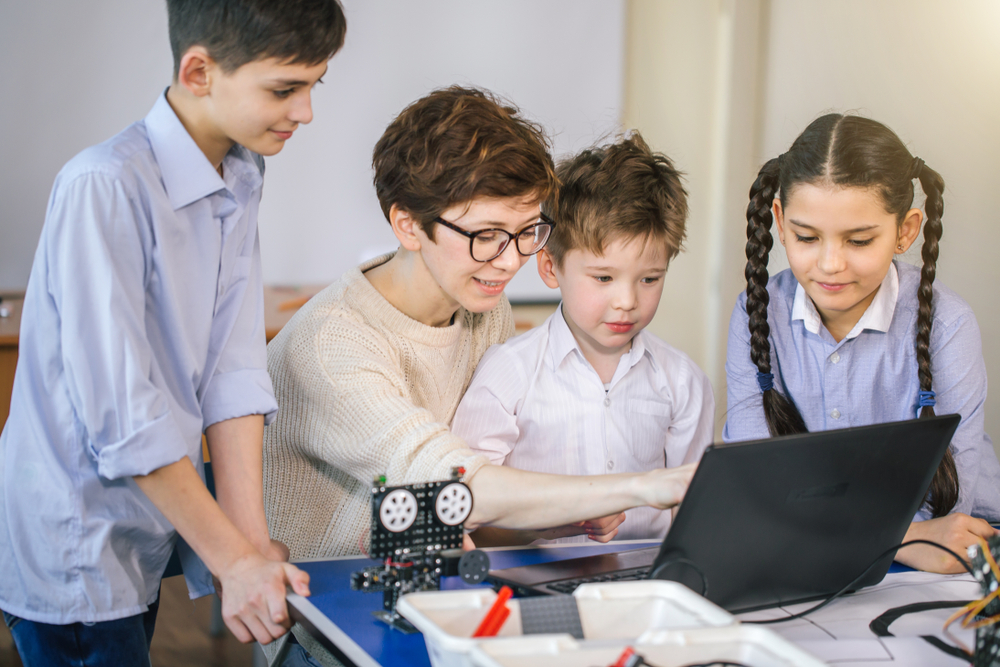Understanding biodiversity Normal Worksheets for Ages 6-9
4 filtered results
-
From - To
Discover our "Understanding Biodiversity" worksheets designed for children ages 6-9! These engaging and educational printables introduce young learners to the wonders of biodiversity, helping them understand the variety of life on Earth. Through fun activities and colorful illustrations, kids will explore different species, their habitats, and the importance of ecosystems. Perfect for classroom or homeschooling, our worksheets make complex concepts enjoyable and accessible. Encourage your child's curiosity, develop their observation skills, and nurture a love for nature with these expertly crafted resources. Join us in fostering environmental awareness and appreciation in the next generation!
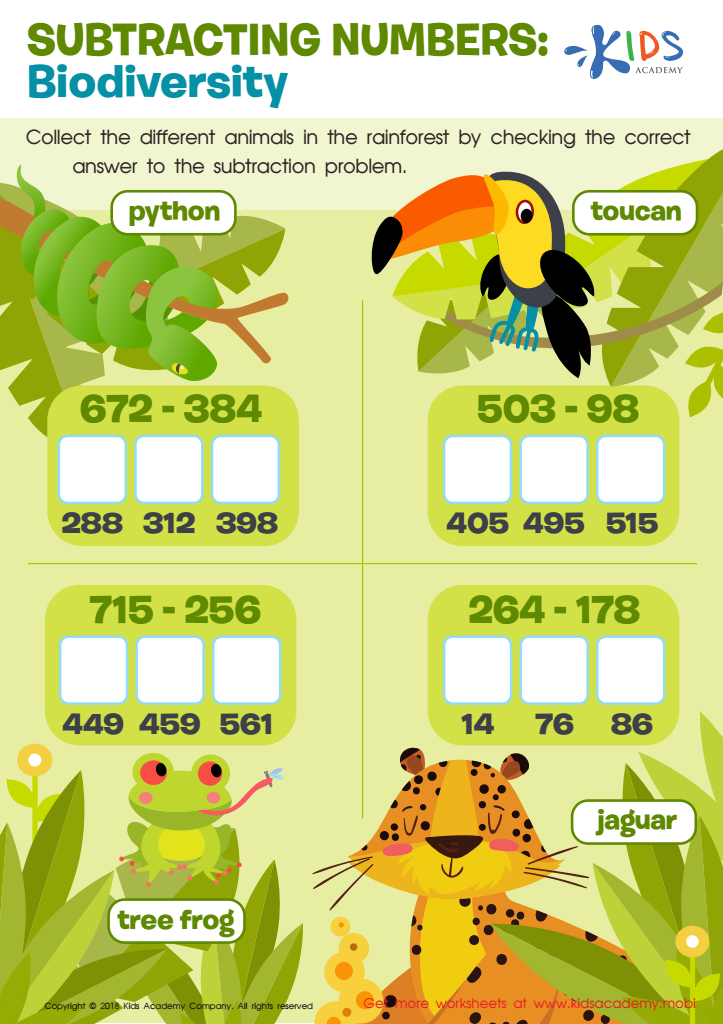

Subtracting Numbers: Biodiversity Worksheet
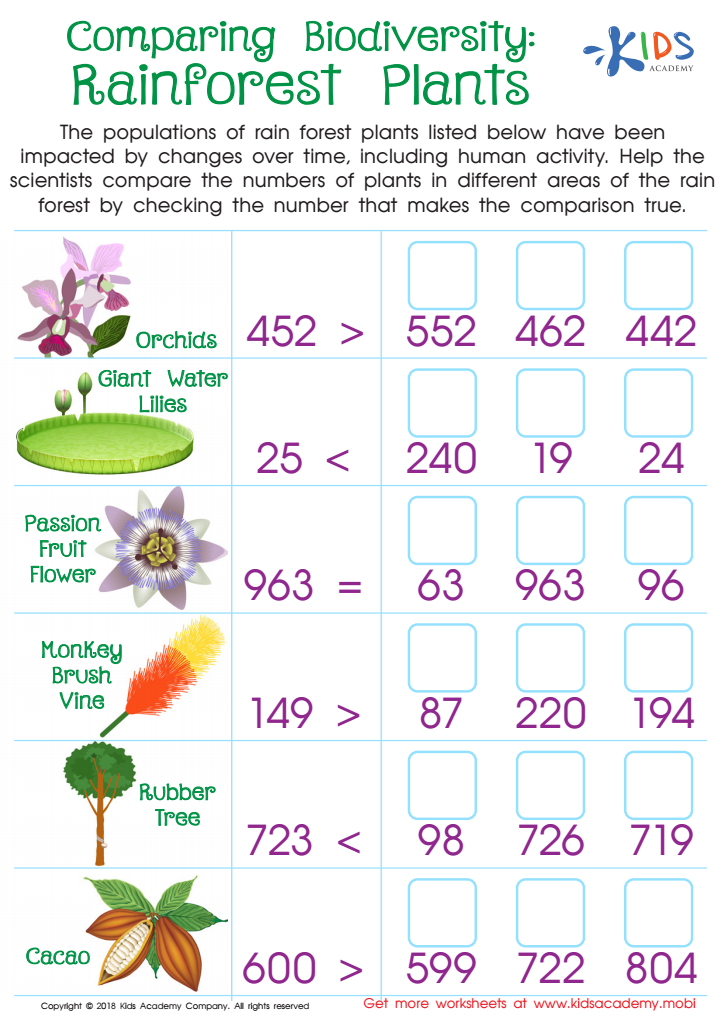

Comparing Biodiversity: Rainforest Plants Worksheet
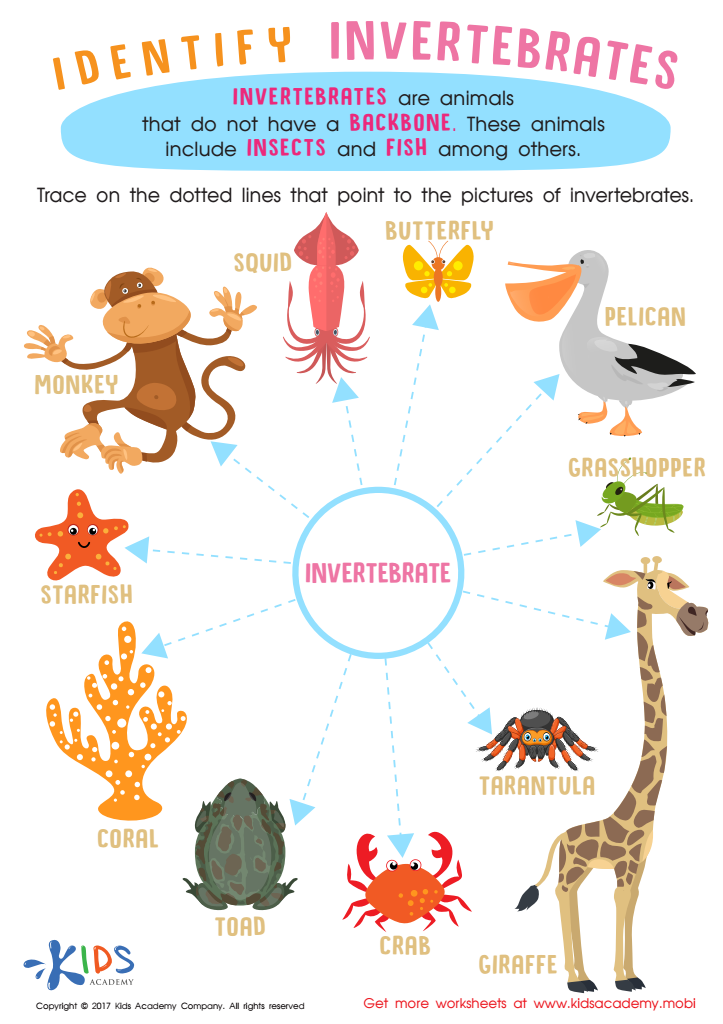

Invertebrates Worksheet for Grade 3
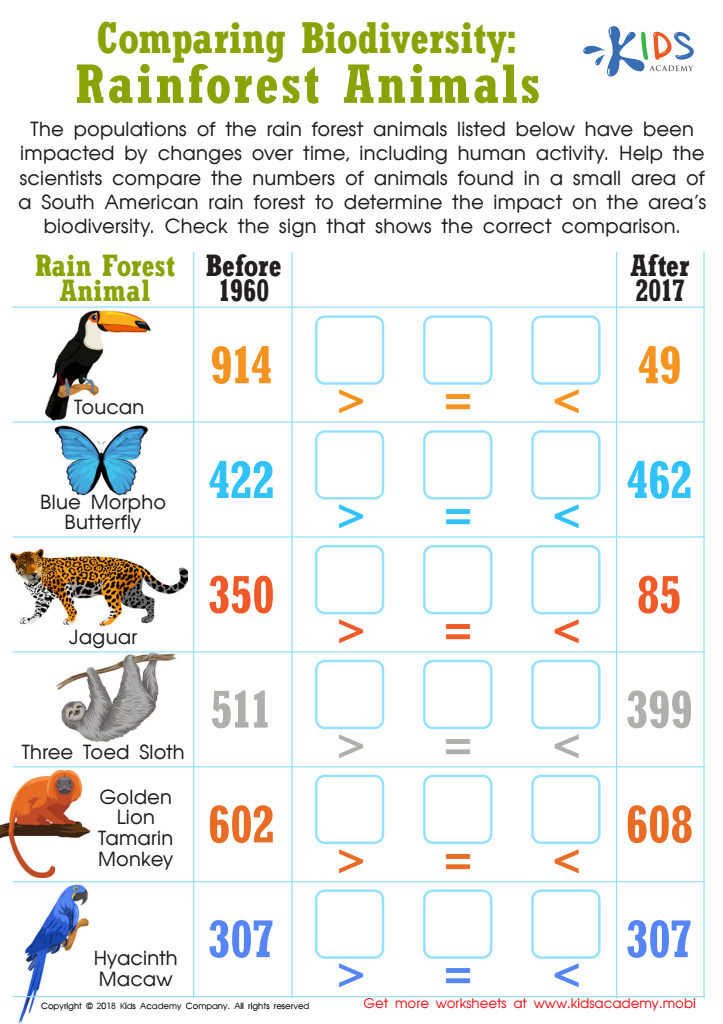

Comparing Biodiversity: Rainforest Animals Worksheet
Understanding biodiversity is essential for fostering a sense of responsibility and stewardship in young children, particularly those ages 6-9. At this impressionable age, kids are developing their views on the world around them, and providing them with knowledge about biodiversity can lay a crucial foundation for lifelong environmental awareness and advocacy. When children learn about the variety of plants, animals, and ecosystems, they begin to appreciate the intricate web of life that sustains our planet. This early education helps them understand how all living things are interconnected and how our actions can impact the environment, both positively and negatively.
For parents, teaching children about biodiversity can result in meaningful family activities that bond everyone closer to nature, such as garden explorations, nature hikes, and visiting local biodiversity hotspots like parks and reserves. For teachers, creating curriculum around biodiversity can make science exciting and relevant, encouraging students to explore, ask questions, and develop critical thinking skills.
Moreover, a child who understands biodiversity is more likely to grow up valuing conservation efforts and making environmentally responsible choices. Instilling these values early can prompt the next generation to become proactive stewards of our planet, aiding in the preservation of its rich natural heritage for years to come.

 Assign to My Students
Assign to My Students


.jpg)

.jpg)

